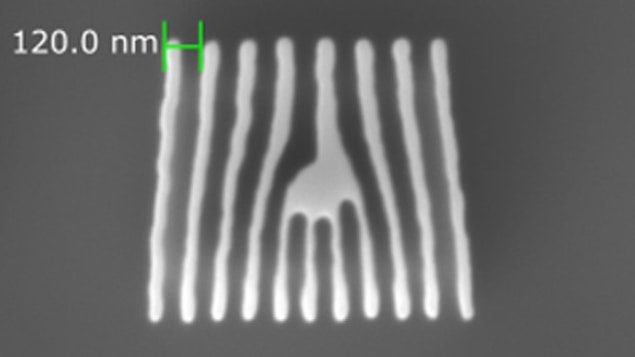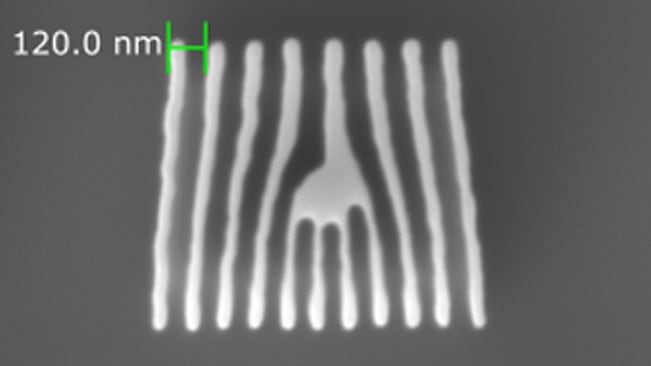
A beam of “twisted” neutrons with a well-defined orbital angular momentum (OAM) has been created by researchers in Canada and the US. This was done by passing a neutron beam from a nuclear reactor through a special array of diffraction gratings. Described as the first observation of a neutron beam with a well-defined OAM, the experiment is the culmination of several years of work by some of the team members, who first reported tentative observations of twisted neutrons in 2015.
According to quantum mechanics, subatomic particles such as neutrons behave like both waves and particles. This wave–particle duality has given rise to the broad and fruitful field of neutron scattering, whereby the interior structures of materials are probed using beams of neutrons from nuclear reactors and accelerators. While such experiments have long used the intrinsic angular momentum (spin) of the neutron, physicists are also keen on creating and detecting beams of twisted neutrons that carry OAM.
Researchers have already been able to create beams of twisted light and twisted electrons in which the wavefronts rotate about the direction of propagation, thereby carrying OAM. These beams have a wide range of current and potential applications including studying chiral molecules and boosting the capacity of optical telecoms systems.
Experimental challenges
So far, however, physicists have struggled to create beams of twisted neutrons. In 2015, Dmitry Pushin and colleagues at the University of Waterloo, along with physicists at the Joint Quantum Institute in Maryland and Boston University published a paper in Nature that described a technique for creating twisted neutrons by passing a beam of neutrons through a spiral phase plate (SPP) – a device that has been used to create twisted light and twisted electrons.
They did this by splitting a neutron beam into two and sending one beam through the SPP. The two beams were then recombined and the researchers measured an interference effect related to orbital angular momentum. However, in 2018 an independent team of physicists published calculations that showed that the interference effect measured by Pushin and colleagues was not related to orbital angular momentum.
Undeterred, Pushin and colleagues have taken a new approach and are now claiming success. Instead of using a SPP, the researchers used a holographic technique that involves an array of millions of special gratings made from silicon. Each grating has a “fork dislocation” whereby one of the lines in the grating splits into four lines, creating a fork-like structure (see figure).
Six million gratings
Each grating measures one micron square and comprises silicon structures that are 500 nm tall and separated by about 120 nn. The array covers an area of 0.5×0.5 cm2 and includes over six million individual gratings.

Physicists cast doubt on ‘twisted’ neutrons
The team tested their system on a small angle neutron scattering (SANS) beamline at the High Flux Isotope Reactor at Oak Ridge National Laboratory in Tennessee. The researchers say that the SANS set-up offered several advantages, including the ability to map the neutron beam in the far field – which meant that a holographic technique could be used to create the twisted neutrons. Also, the instrumentation on the beamline could be adapted to measure the orbital angular momentum of neutrons.
After passing through the array, the neutron beam travelled a distance of 19 m to a neutron camera. Images taken by the camera show the distinctive doughnut-shaped pattern that is expected from a beam of twisted neutrons that is in a specific state of orbital angular momentum. The doughnut-shaped patterns were about 10 cm in diameter.
The team says that their setup could be used to study the topological properties of matter – properties that could prove useful in developing new quantum technologies. It could also be used in fundamental studies of how orbital angular momentum affects how neutrons interact with matter.
The research is described in Science Advances.
